On this week’s Rocket Roundup, China launches two different rockets and an ISS resupply brings new technology and also student involvement. Plus, this week in rocket history, we look back at the impact of the Landsat program on monitoring Earth’s climate.
Podcast
Transcript
Hello, and welcome to the Daily Space. My name is Dr. Pamela Gay, and most weekdays, the CosmoQuest team is here putting science in your brain.
Today, however, is for Rocket Roundup.
Including, this week, a rocket refusing to fly.
Boeing’s Starliner still isn’t ready for its launch. Half of the 24 valves controlling propellant flow to the vehicle’s thrusters malfunctioned, and the rocket was rolled back from the pad for analysis. Boeing restored functionality to seven of those valves so far without yet figuring out the root cause of why they malfunctioned in the first place.
But enough about Starliner. Let’s get to the launches, shall we?
First up, on August 4 at 11:01 UTC, the third Long March 6 rocket of the year took off from Taiyuan Satellite Launch Center in northern China and inserted a pair of KLEO Connect Beta spacecraft into orbit.

Long March 6 is a next-generation Chinese rocket that uses less toxic kerosene and liquid oxygen propellant instead of the pretty-but-deadly combination of unsymmetrical dimethylhydrazine and nitrogen tetroxide.
As for the payload, the two satellites are development spacecraft for KLEO Connect, a German company. These satellites are a test for a planned constellation to provide mobile communications. They operate in the Ka band, which is standard for satellites like these. A key part of their mission is to verify that the satellites’ transmissions will not be interfered with by signals coming from other communication satellites that are in the much higher geostationary orbit. Interference could result in garbled or missing signals from both sets of communications satellites.
A secondary goal of KLEO Connect Beta is to evaluate the performance of off-the-shelf electronics components in the satellite to see if they can be used instead of space-rated components. Off-the-shelf components are exactly what they sound like: components that are ready-made, usually in mass quantities. This reduces the cost of building spacecraft because space-rated components are typically special-ordered and very expensive.
Now from a small Chinese launcher to a much bigger one with a military payload.
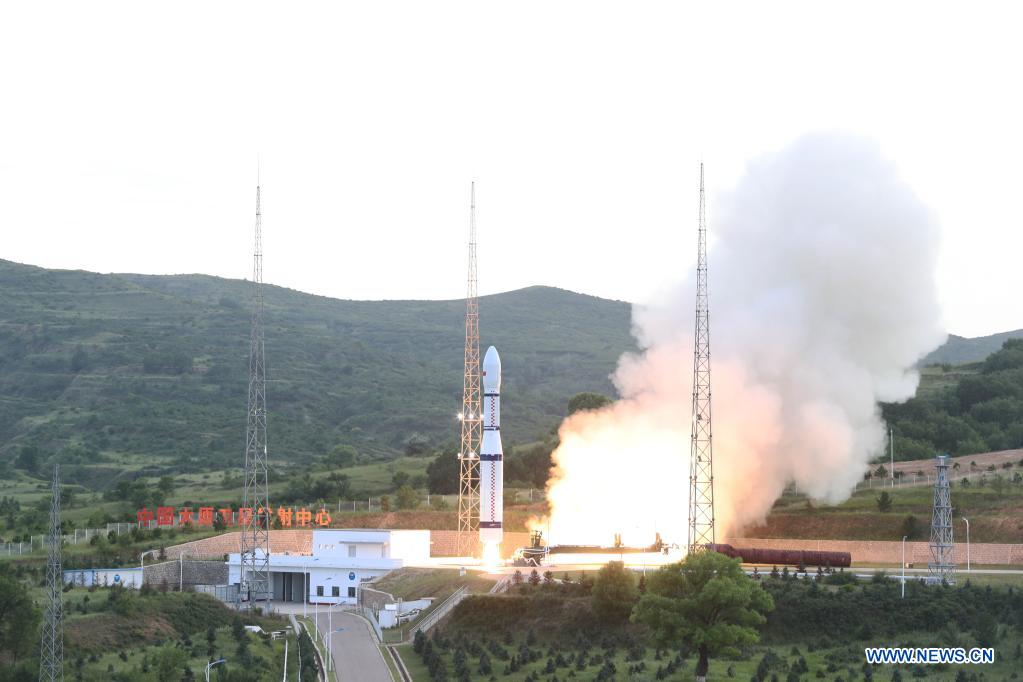
On August 5 at 16:35 UTC, a Long March 3B Gen 3 rocket launched the Chinasat 2E spacecraft to geostationary transfer orbit from the Xichang Satellite Launch Center in China. Because Chinasat 2E is a military communications satellite, not much is publicly known. We do know that it operates in the Ku band and has several steerable spot beam antennas allowing communications from moving vehicles and secure uplinks.
The rocket it launched from is a little more interesting. The Long March 3B is a three-stage rocket with hypergolic first and second stages and a cryogenic hydrogen third stage. So, the first two stages were powered by the pretty but deadly combination of nitrogen tetroxide and unsymmetrical dimethylhydrazine. These chemicals don’t have to be kept super-cold and are stable for long periods in storage. When they combine, they combust, resulting in a characteristically ominous — and highly toxic — reddish-orange flame and smoke plume on launch. The third stage, filled with super-cold liquid hydrogen, is much safer for people and the planet but requires a lot of extra plumbing to keep the hydrogen under enough pressure and cold enough to remain a liquid.
And now we go from the high orbit of Chinasat 2E to the International Space Station.
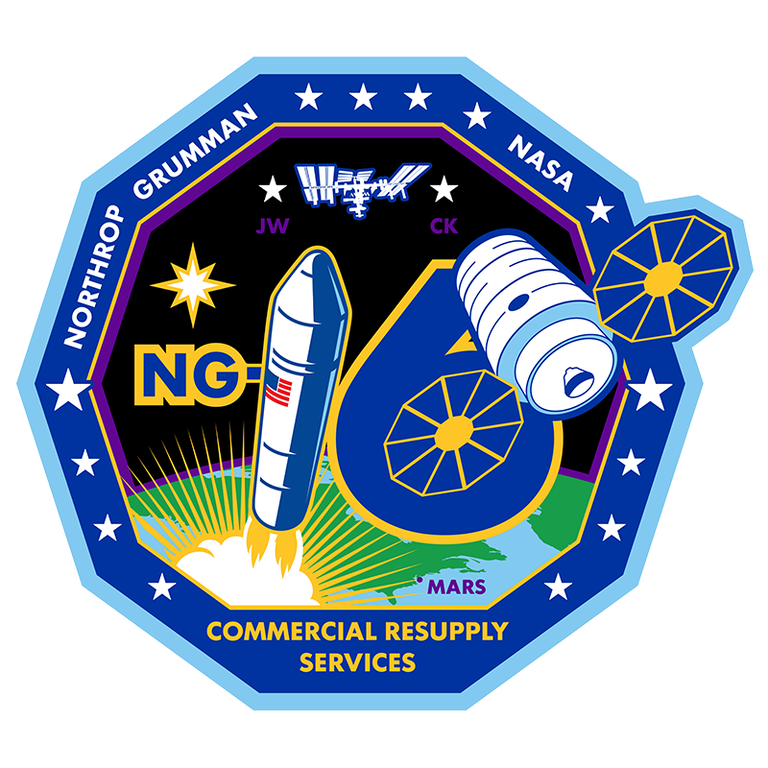
On August 10 at 22:01 UTC, a Northrop Grumman Antares rocket launched the NG-16 mission to the International Space Station from Pad 0A at the Mid Atlantic Regional Spaceport in Virginia. In the tradition of naming the Cygnus spacecraft in memory of someone who has made a significant impact to spaceflight, this spacecraft was given the name SS Ellison Onizuka. Onizuka was selected as a NASA astronaut in 1978 and flew into space on Discovery’s STS-51C mission in 1985, a classified mission for the Department of Defense. He was a crew member on the space shuttle Challenger that was lost in 1986.
Onboard NG-16 is 3,723 kilograms of cargo to the station — that’s 1,861 two-liter soda bottles — including equipment and science experiments. We don’t have time to cover all of the experiments onboard, so here are three that our team found interesting.
The first is an experiment called Redwire Regolith Print, a 3D printer designed to print with regolith or loose rock on a planetary body. It consists of modified extruders and print beds for the 3D printer currently on the station. Printed samples will be returned to Earth for analysis, where they will be tested for strength and flexibility and compared to the standards for rigid plastics. The hope is that this technology will allow for the construction of durable structures on planetary bodies. If future crewed missions could build shelter from materials already at their destination, they would be able to bring more science and food with them to their destination.
Speaking of food: KREPE, which is short for Kentucky Reentry Probe Experiment, is a proof of concept demonstration featuring three small capsules that will return from space aboard the Cygnus. As the Cygnus burns up during reentry, the capsules will be released. Their mission is to record the conditions inside the capsules during reentry. Because the capsules are expected to end up somewhere in the middle of the Pacific Ocean, there’s no practical way to retrieve data stored onboard. Instead, the data will be transmitted back via Iridium satellites.

If KREPE is successful, it will pave the way for a new, relatively inexpensive way to return small payloads back from the ISS without having to dedicate a much larger return vehicle to them. Presumably, the next phase of KREPE will be to figure out how to get the return capsules to the ground in one piece.
And finally, the European Space Agency’s Blob. The Blob is a slime mold. Slime molds are pretty neat. They do not fit neatly into the plant, animal, or fungi kingdoms. Composed of just one cell, it is still able to move, feed, organize itself into groups, and even transmit knowledge to other slime molds — all without a brain. In space, ESA astronaut Thomas Pesquet will monitor how a slime mold adapts to microgravity. Thomas will monitor the slime mold for a period of time and record a time-lapse video of the Blob. Using that video, students here on Earth will grow their own slime molds and compare their Earth blobs’ behavior to the space Blob’s.
This Week in Rocket History
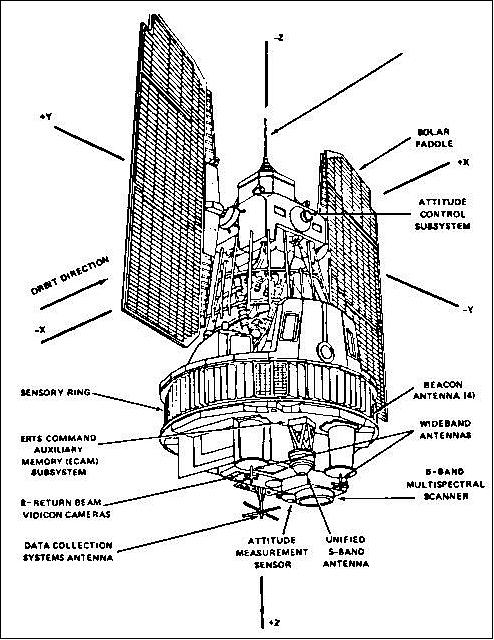
This week in rocket history: the fiftieth anniversary of the launch of Landsat 1, the first satellite with the mission of observing the entire United States and the rest of Earth’s landmasses and monitoring changes over time.
In case you missed it, the Intergovernmental Panel on Climate Change released its sixth assessment report earlier this week, in which the negative impact of humans on the Earth’s climate has, unfortunately, been confirmed. The conclusions are based on many years of research and observations, using data from many sources, including satellites like the Landsat satellites operated by the USGS.
The Landsat program began with the launch of Earth Resources Technology Satellite 1 (ERTS-1), which was renamed Landsat 1 upon reaching orbit. Built and operated by NASA on behalf of the U.S. Geological Survey, it launched on July 23, 1972, on a Delta 900 from Vandenberg Air Force Base. It was the first satellite with the mission of observing the entire United States and the rest of Earth’s landmasses over time. Onboard were two instruments: the Return Beam Vidcon (RBV) and Multispectral Scanner (MSS). Both were sensitive to visible and near-infrared bands
The RBV recorded its information onto 70mm black and white film which was developed in orbit. In order to send the data back to Earth, the film was scanned with a process similar to how a television camera worked at the time. To give you an idea of size, 70mm is the same size as the film used for an IMAX movie camera.
The MSS used a 24-sensor digital detector in a whiskbroom configuration, which collected data one pixel at a time by scanning back and forth across the image swath, meaning it could only capture part of an image in a diagonal fashion as the spacecraft’s orbital motion carried it along. It scanned side to side, unlike the RBV which could capture an entire image in one exposure.
Both instruments had a ground resolution of 80 meters, so they could see things that were just a little smaller than a football field.
Unfortunately, the RBV failed before exhausting its film after taking less than 2,000 images. The MSS, on the other hand, operated until the spacecraft’s data tape recorders failed in 1978, after which the satellite was decommissioned.
However, that wasn’t the end of the program. Landsat 1 was just the first in a series of Earth observation satellites that continues to this day with Landsat 7 and 8. Landsat 2 and 3 were very similar to Landsat 1, though Landsat 3 included a thermal band in the Multispectral Scanner instrument used on the first two satellites.
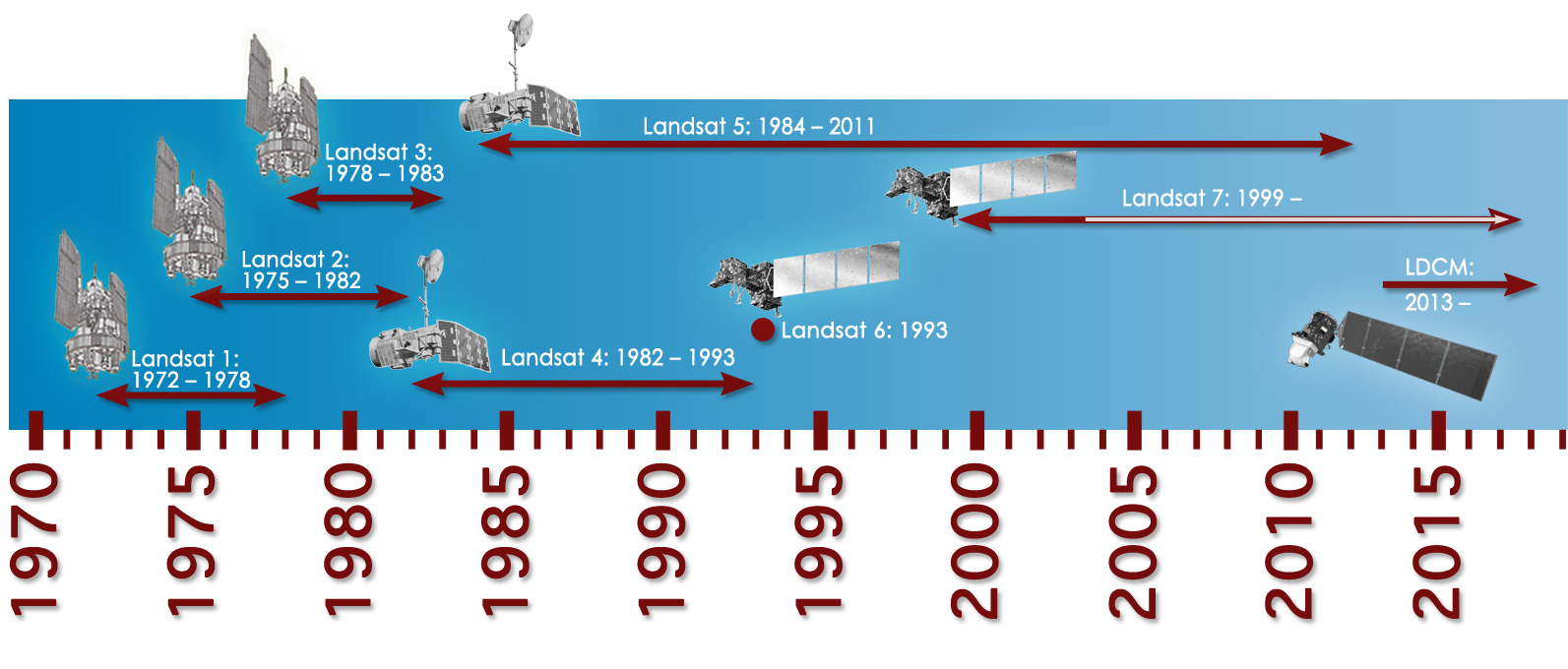
Landsat 4, which included an updated Multispectral Scanner instrument and a Thematic Mapper instrument, was operational from July 1982 to December 1993, about five years longer than expected. Its twin, Landsat 5, was launched in March 1984 and operated continuously for almost thirty years until it ceased operations in June 2013.
Landsat 6 was launched in October 1993 but failed to reach orbit. It was similar to Landsat 5 but had an upgraded panchromatic imager called the Enhanced Thematic Mapper, which had a resolution of 15 meters. That resolution is good enough to see roads. Its replacement, Landsat 7, was launched in April 1999 and is still operational to this day — 22 years and going strong. Landsat 8 was launched in February 2013 and is also still active.
Landsat 9 is currently being integrated for launch next month on an Atlas 5 rocket.
Imagery from all of the Landsat satellites is used by many different sectors, from agriculture, urban planning, forest management, and precision agriculture, to discovering new energy sources, and more. Landsat data is also used to monitor human health by monitoring mosquito breeding grounds and the health of plants using infrared measurements to identify areas affected by drought.
Landsat can help water planning by informing managers where algal blooms might form. Algal blooms are harmful concentrations of cyanobacteria that can contaminate drinking water for humans as well as kill fish and other wildlife in the water. They create toxins that cause everything from headaches to reduced neurological, kidney, and liver function. Landsat does this with its 30-meter resolution, which is capable of resolving 95% of all water sources in the U.S. It is also sensitive to the 620-nanometer wavelength that the algal blooms reflect the most.
The forty-odd-year data set is also used to monitor glaciers and ice sheets to track climate change. Landsat 8 images the entire Earth every sixteen days, allowing scientists to track the movements of glaciers in near real-time. The program is called the Global Land Ice Velocity Extraction project, or GoLIVE. When Landsat data is combined with other datasets like atmospheric and ocean conditions, scientists can figure out what causes the ice sheets to move and how the movement will affect ocean levels. This large data set spanning decades allows researchers to see changes over time and see if they’re correlated to things like anthropogenic (caused by humans) climate change.
Statistics
To wrap things up, here’s a running tally of a few spaceflight statistics for the current year:
Toilets currently in space: 8: 4 installed on ISS, 1 on the Crew Dragon, 1 on the Soyuz, 1 on the Shenzhou, and 1 on Tianhe.
Total 2021 orbital launch attempts: 76, including 4 failures
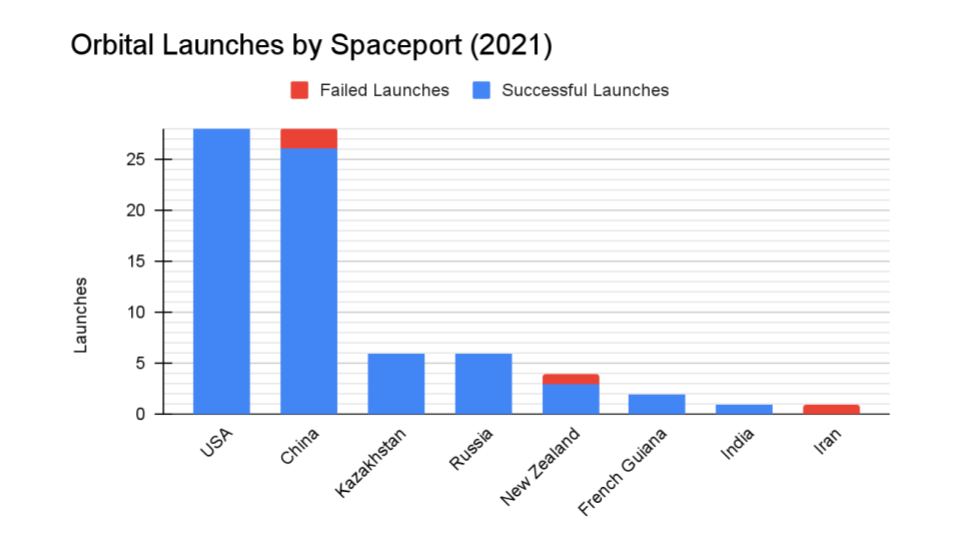
Total satellites from launches: 1311
I keep track of orbital launches by where they launched from, also known as spaceport. Here’s that breakdown:
USA: 28
China: 28
Kazakhstan: 6
Russia: 6
New Zealand: 4
French Guinea: 2
India: 1
Iran: 1
Random Space Fact
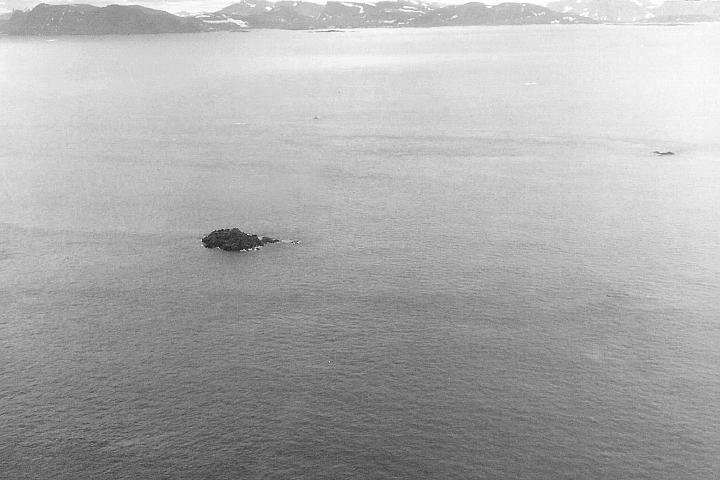
And finally, your space fact for the week is related to the first Landsat satellite. In 1976, a Canadian cartographer named Elizabeth A. Fleming identified, using Landsat 1 data, a previously unknown island located about 20 kilometers off the eastern coast of Canada and measuring just 25 meters x 45 meters. Its existence was confirmed by the Canadian Hydrographic Service by lowering Dr. Frank Hall, Sr. from a helicopter. He never made it to the ground because he was attacked by a polar bear. However, he was quickly pulled to safety before the bear could take a chunk out of him. This island was thereafter designated Landsat Island after the satellite, and Canada grew by 68 square kilometers.
This has been the Daily Space.
Learn More
Chinese Rocket Launches Commercial Satellites
- CASC press release (Chinese)
- Long March-6 info page (Gunter’s Space Page)
- KL-Beta A and B info page (Gunter’s Space Page)
- Launch video
China Launches Military Satellite Toward Geostationary Orbit
- CASC press release (Chinese)
- Shen Tong 2 info page (Gunter’s Space Page)
- Launch video
ISS Resupply Brings Experimental Life Support, Student Biology Experiment
- NASA press release
- PDF: Ellison Onizuka biography (NASA)
- Overview for Northrop Grumman’s 16th Commercial Resupply Mission (NASA)
This Week in Rocket History: Landsat
- Landsat 1 (USGS)
- Landsat-1 to Landsat-3 (eoPortal)
- Historic Landsat 5 Mission Ends (NASA)
- VIDEO: Landsat 8 (NASA)
- Landsat 9 Overview (NASA)
- How Landsat Helps Us (NASA)
- Landsat’s Critical Role in Protecting Human Health (NASA)
- PDF: Satellites on Toxic Algae Patrol (NASA)
- PDF: Landsat Provides Global View of Speed of Ice (NASA)
Credits
Host: Pamela Gay
Writers: Gordon Dewis, Pamela Gay, Erik Madaus, Ally Pelphrey, and Annie Wilson
Audio and Video Editing: Ally Pelphrey
Content Editing: Beth Johnson
Executive Producer: Pamela Gay
Intro and Outro music by Kevin MacLeod, https://incompetech.com/music/


 We record most shows live, on Twitch. Follow us today to get alerts when we go live.
We record most shows live, on Twitch. Follow us today to get alerts when we go live.